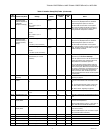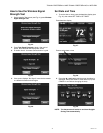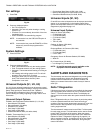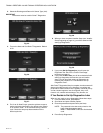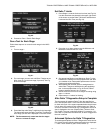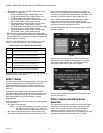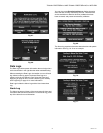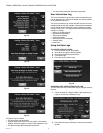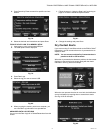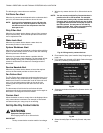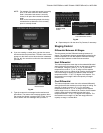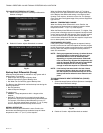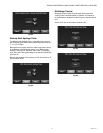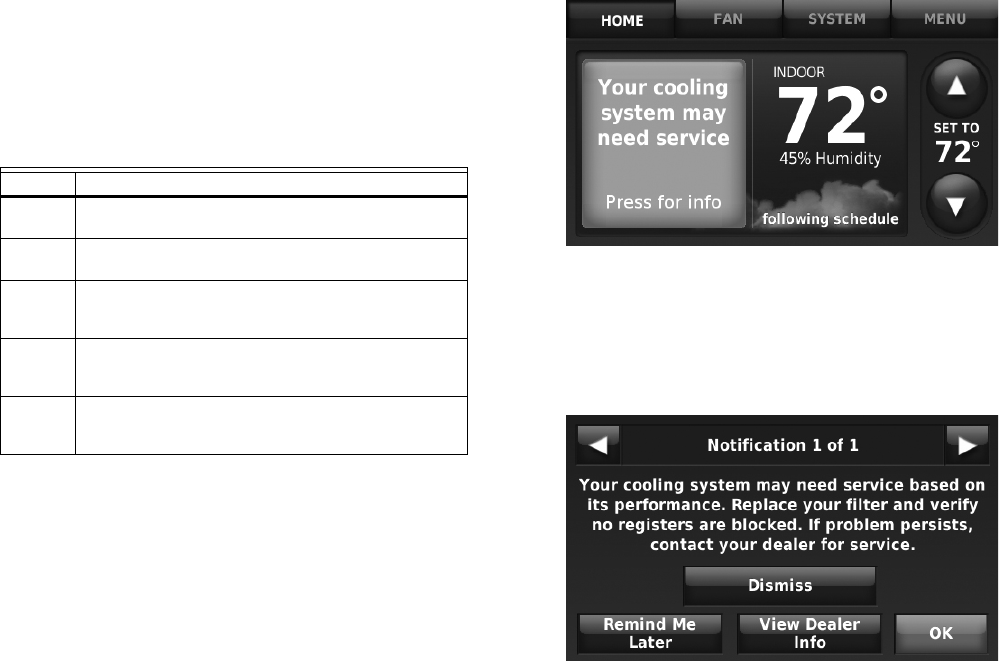
THX9321 PRESTIGE
®
2.0 AND THX9421 PRESTIGE
®
IAQ 2.0 WITH EIM
68-0311—01 54
• Display Delta T Alerts to User (ISU 13190; Default: Yes)
• Allow Delta T Diagnostics:
— during humidification (ISU 13020; Default: Yes)
— during dehumidification (ISU 13030; Default: Yes*)
— during ventilation (ISU 13040; Default: Yes)
— only when indoor temperature is within a certain range
(ISUs 13050, 13090, 13130; Default: Always)
— only when indoor humidity is within a certain range
(ISUs 13060,13100, 13140; Default: Always)
— only when outdoor temperature is within a certain range
(ISUs 13070, 13110, 13150; Default: Always)
— only when outdoor humidity is within a certain range
(ISUs 13080, 13120, 13160; Default: Always)
* Default is Yes for Dehumidifiers and A/C with High Speed
Fan. The thermostat does NOT allow Delta T diagnostics dur-
ing dehumidification if it is setup for A/C with Low Speed Fan,
Hot Gas Bypass, or Reheat.
The Delta T Alert Sensitivity is set on a scale of 1–5 in ISU
13180 (1 is the least sensitive; 5 is the most sensitive):
By default, Delta T alerts are displayed to the user, but can be
turned off and on in ISU 13190.
Delta T Alerts
The thermostat uses alerts and diagnostics to provide greater
comfort and efficiency. Alerts and diagnostics can notify
customers when maintenance or service is needed, and
display your contact information to make it easy for them to
reach you.
This tells you if the system is performing above or below
expected standards which would normally go unnoticed, and
may cause unnecessary energy use. It can also detect and
warn about problems early, before heating or cooling
equipment fails.
There are three alerts each for the heating and cooling system.
They occur when:
• the system is not operating
NOTE: The thermostat displays an alert when the sys-
tem does not reach a Delta T of 5 F after the
thermostat calls for a reasonable period of time.
• the system is operating below the minimum Delta T limit
• the system is operating above the maximum Delta T limit
Delta T Alerts are displayed for basic failures including no
heating or no cooling that may be related to bad igniter, bad
flame sensor, bad gas valve, bad draft motor, bad blower, bad
contactor, bad startup capacitor, dead compressor, etc.
Delta T Alerts are also displayed for performance related
issues such as dirty air filter, blocked registers, loss of
refrigerant, dirty a-coil, frozen a-coil, cracked heat exchanger,
dirty burners, burners need adjustment, etc.
Alerts are displayed to the user on the home screen. See Fig.
65 for an example.
Fig. 65.
When the user presses the alert for more information, the
Notification screen is displayed, prompting them to perform
some basic troubleshooting and, if the problem persists,
contact their dealer. See Fig. 66 as an example.
Fig. 66.
Alerts are also recorded in the Alerts Log. See “Data Logs”
beginning on page 55.
Delta T Alerts and Utility Saver
Switches
For systems that might be interrupted by a utility saver switch
(conventional cooling and heat pumps in the heat and cool
mode), the thermostat will ask if a utility saver switch is
installed and provide an option to the user to turn off
diagnostics temporarily while power is interrupted by the utility
company. Diagnostics can be turned off for 1-14 days.
Table 3. Delta T Alert Sensitivity (ISU 13180).
Setting Alert is logged and user is alerted if
1 10 of the last 15 valid cycles have the same fault, or
25 of the last 30 valid cycles have the same fault.
2 10 of the last 15 valid cycles have the same fault, or
20 of the last 30 valid cycles have the same fault.
3
(Default)
5 of the last 5 valid cycles have the same fault, or
10 of the last 15 valid cycles have the same fault, or
15 of the last 30 valid cycles have the same fault.
4 5 of the last 5 valid cycles have the same fault, or
8 of the last 15 valid cycles have the same fault, or
15 of the last 30 valid cycles have the same fault.
5 3 of the last 5 valid cycles have the same fault, or
8 of the last 15 valid cycles have the same fault, or
10 of the last 30 valid cycles have the same fault.




